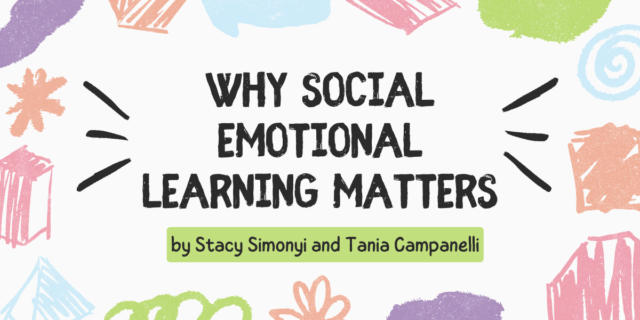
by Jocelyn Chadwick and John Grassie
Diversity. Inclusion. Exclusion. Equity. School to prison pipeline. School to deportation pipeline. Homelessness. Achievement gaps. Socio-economic status (SES). These newly familiar realities join other more familiar ones for our students: Loneliness. Outsider. Love. Hate. Family. Success. Failure, to cite a few. Environment—both inside and outside our classrooms and schools—necessarily affects how our students learn, and, regretfully, do not learn. English language arts plays a key role in these environments not only because our students remain with us PreK–college, but also because in our classes, we blend literature and writing and critical thinking, speaking, and listening. And our literature, especially, provides a mortar which can in so many expected and unexpected ways unlock and explore these realities in safe environments created in our classrooms.
That our literature relies on both classical and modern time periods stands us in good stead. This generation of students has so much with which to contend. Students who come from challenging environments, as well as students from privilege; students of color, as well as students who are not; students whose roots are embedded in the United States, as well as those whose roots are embedded in countries outside the United States; students who fit the archetype of “normal” as well as those who fit outside the stereotype: all of our students can identify and understand themselves, their concerns, their issues,and society through the literature we teach. The literature’s speaking to our students from both the past and the present helps them to see and understand that their situation, their feelings and frustrations are decidedly not insurmountable. Our students can indeed use the literature as life-lessons to which they can continuously refer and reconsider as they mature.
—
Yes, our students are the modern audience
—
Through the myth of Medea, for example, students witness jealousy and revenge, even when the human, Medea, strives to do the right thing. Through Toni Morrison’s God Help the Child, students explore a concept that inundates them 24/7—beauty and the lack thereof, as societally defined. Through King Lear, they see love is not a commodity for purchase. Yes, our students are the modern audience, reading and experiencing works from both past and present that yet wrestle with familiar, recurring human themes. Orestes, Hester, Lear, Alice, Odysseus, Walter Lee Younger, the Joads, Perseus, Shug Avery, even Sleeping Beauty, all lose or are displaced from their homes—safety, identification, their sense of place and belonging. For our students, this theme emerges all too clearly for them with increasing homelessness, displacement, economic uncertainty. Experiencing the vast scope of the literature we teach privileges our students, regardless of and, often, in spite of their own backgrounds to understand, to contemplate, to reflect, and to identify on multiple levels. Simply put, to learn.
The environment we create in our ELA classrooms that is conducive for fomenting engaged and safe literacy instruction blended with the variety of environments literature creates necessarily strengthens our students’ resilience and hones their curiosities.
PD Nugget: Twists and Turns
While students also experience relevance in texts they themselves select, this PD Nugget focuses on an assigned ELA classroom text. Students, working collaboratively in groups or individually, will select an excerpt to examine and explore closely. The focus of the activity encourages students to see and experience literature beyond its traditional parts. They are exploring and searching for the text’s relevance to them, as discussed in the video and the blog. This kind of direct engagement entails students’ “twisting and turning” the message, the elements, and the author’s intent, essentially, wrestling with them, in such a way that their understanding and connecting emerge.
The final stage of the activity involves students’ sharing and expressing to what extent they were or were not able to find identification, or relate, to the text. Specificity here is essential. What elements of the work resonate, echo, with students’ own experiences—personal and/or observed? What similarities do they see? What differences? Does the environment, setting, or event resonate with them and their reality? What are students’ opinions of characters’ actions and responses when compared and contrasted to their own? How would their responses the the environment, setting, or event change the work? How has the environment, setting, or event established in the text changed today?
For additional information, contact Heinemann Professional Development.
Click here to learn more about Teaching Literature In The Context of Literacy Instruction.
♦ ♦ ♦ ♦


Jocelyn A. Chadwick has been an English teacher for over thirty years—beginning at Irving High School in Texas and later moving on to the Harvard Graduate School of Education where she was a professor for nine years and still guest lectures. Dr. Chadwick also serves as a consultant for school districts around the country and assists English departments with curricula to reflect diversity and cross-curricular content. For the past two years, she has served as a consultant for NBC News Education's Common Core Project for Parents, ParentToolkit. In June 2015, Chadwick was elected Vice President for the National Council of Teachers of English.
John Grassie is a veteran broadcast journalist, with more than 25 years’ experience producing news coverage, program series, and documentaries for Public Television, NBC News, and Discovery. During his broadcast career, Grassie’s work received numerous awards for excellence in journalism.
Their newest book is Teaching Literature In The Context Of Literacy Instruction.


